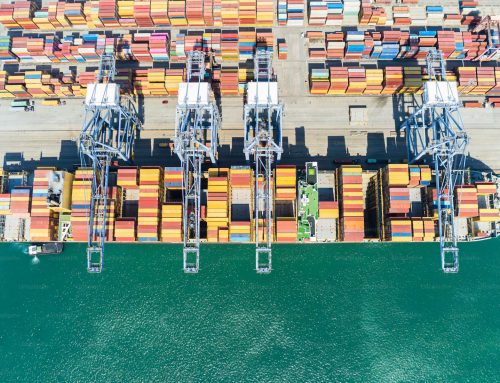Each hour counts when responding to a natural disaster, such as Hurricane Matthew which hit Haiti in October 2016. Affected populations are in desperate need for food, medicines or shelters. It took international relief organization based in the U.S. or Europe several days or even weeks to purchase these supplies and ship them to Haiti. During this time, people in Haiti continued to suffer. Because of the unpredictable nature of disasters, an organization that is not prepared can’t respond to the needs of the population in a reasonable amount of time.
A relief organization can get prepared by prepositioning relief supplies such as food, medicines or shelters in warehouses in vulnerable countries. If a disaster hits, the organization delivers the supplies from its local warehouse. This preparedness strategy is very effective, but generates extremely high costs. Indeed, these supplies aren’t used during years with no disaster and thus need to be renewed regularly, especially food or medicines with expiration dates. Moreover, because nobody knowns where the next disaster will hit, international relief organizations have to set up a local warehouse in every disaster prone country. For these reasons, disaster preparedness has been limited so far, because no relief organization has the financial resources to run such an expensive network of warehouses.
In a paper I wrote with colleagues,[1] we propose an alternative to this expensive preparedness strategy. Instead of prepositioning supplies in multiple countries, we recommend relief organizations keep relief supplies in a central warehouse and send them by airplane right after a disaster hits a country. There is a caveat, however. If an organization isn’t already present in a country, it doesn’t have a local network of partners it can rely on to receive the supplies and distribute them. Any shipment into a country has to fulfill all administrative requirements, go through customs clearance, be picked up at the airport and delivered to distribution points. This is impossible without a good local knowledge and existing network in each country. In our paper, we suggest that relief organizations can build this knowledge and network by investing in local disaster management capabilities. These capabilities are, for example, to develop specific importation procedures for each country, negotiate agreements with local governments, identify local suppliers and staff that could distribute the supplies and identify possible distribution centers. By developing such capabilities, the relief organization can be prepared to respond quickly after a disaster, without having to spend colossal amounts for prepositioning supplies.
Through a simulation model, we demonstrated that investing in disaster management capabilities costs 28 times less than prepositioning supplies, while enabling a relief organization to respond quickly to the needs of beneficiaries. We found that investing in disaster management capabilities decreases the response time by 18 days compared to a scenario without preparedness.
Nathan Kunz can be contacted at nathan.kunz@unf.edu
[1] Kunz, N., Reiner, G. & Gold, S. (2014), “Investing in disaster management capabilities versus pre-positioning inventory: A new approach to disaster preparedness”, International Journal of Production Economics, Vol. 157, November 2014, pp. 261-272.




